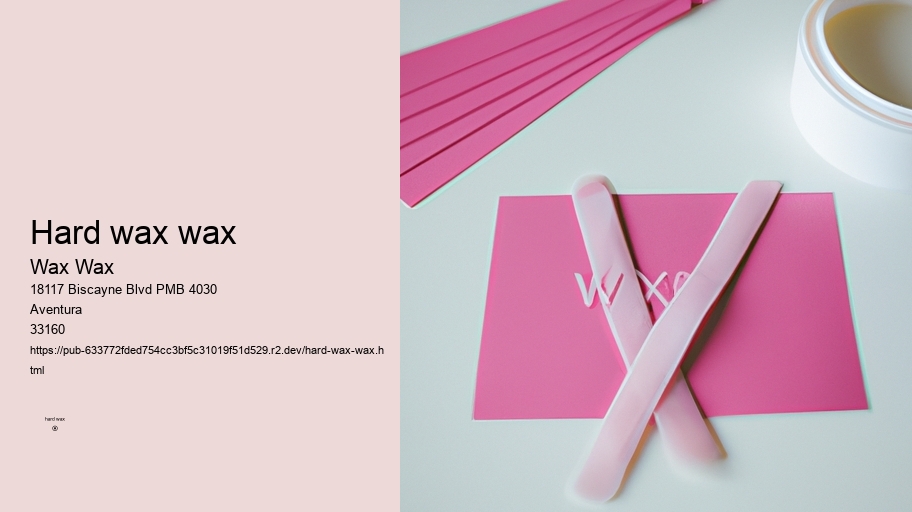

When applying wax, it is crucial to ensure that the temperature is just right. If the wax is too hot, it can burn your skin and cause irritation (irritation), while if it is too cold, it will not effectively adhere to the hair for proper removal. It's important to follow the instructions on the wax packaging and test a small amount on your skin before proceeding with full application. Remember, getting the temperature right is key to a successful DIY waxing session!
Waxing is a form of semi-permanent hair removal that involves applying a sticky substance, such as wax, to adhere to body hair and then removing this covering to pull out the hair from the follicle. New hair will not grow back in the waxed area for four to six weeks. Waxing can be done on various parts of the body, including eyebrows, face, legs, arms, back, abdomen, chest, and feet. There are different types of waxing methods available, such as strip waxing (soft wax) and stripless wax (hard wax and film wax). While waxing is an effective method for removing hair in large amounts at once and provides long-lasting results compared to shaving or using depilatory creams, it can also be painful and expensive. Get the best hard wax products from Wax Wax. Some people may experience ingrown hairs or skin irritation after waxing.
Reusing wax strips or not changing them frequently enough can lead to ineffective hair removal and even skin irritation. It is important to use fresh wax strips for each application to ensure proper adherence and removal of hair.
Waxing can be done on various parts of the body, including eyebrows, face, legs, arms, and intimate areas. epilation wax It offers long-lasting results compared to shaving or depilatory creams because it removes hair from the root. However, some people may experience pain during waxing, especially in sensitive areas.
Drinking caffeine or alcohol before your waxing appointment can make your skin more sensitive(1). It's best to avoid these substances as they can heighten pain during the session(2)!
Types
To minimize irritation, you can try using a pre-waxing oil or numbing cream to help reduce discomfort.
Factors to consider when determining frequency of waxing
Waxing is a form of semi-permanent hair removal that involves applying a sticky substance, such as wax, to adhere to body hair and then removing this covering to pull out the hair from the follicle. New hair will not grow back in the waxed area for four to six weeks. Waxing can be done on various parts of the body, including eyebrows, face, legs, arms, back, abdomen, chest, and feet. There are different types of waxing methods available, such as strip waxing (soft wax) and stripless wax (hard wax and film wax). While waxing is an effective method for removing hair in large amounts at once and provides long-lasting results compared to shaving or using depilatory creams, it can also be painful and expensive. Some people may experience ingrown hairs or skin irritation after waxing.
Less redness and bumps: One of the main advantages of waxing over shaving is the reduced likelihood of skin irritation. Waxing pulls hair out from the root, resulting in smoother skin without the risk of razor burn or ingrown hairs.
Overall, waxing remains a popular choice for hair removal due to its effectiveness and longer-lasting results. The practice continues to be refined with new techniques and products being developed to improve the experience for those seeking smooth and hair-free skin.
[ edit ]
Historical facts about waxing
To ensure success with DIY waxing at home, it is important to carefully follow instructions, choose high-quality products suited for your skin type, and practice proper technique to minimize potential risks or complications.
Tips for preparing sensitive skin before waxing

Knowing your skin type (e.g. sensitive, oily, dry) will help determine the best type of wax for you.
To avoid irritation and ingrown hairs after waxing, follow these simple steps for smooth and healthy skin. First, remember to exfoliate the waxed area 48 hours after your treatment to prevent dead skin cells from clogging hair follicles.
Waxing can also help in weakening the hair follicle over time, making the regrowth finer and softer. As a result, regular waxing can lead to thinner and sparser hair growth in the long run. So don't let the misconception about faster hair growth deter you from trying out waxing as a method of hair removal!
Preparation: Before applying soft wax, it is essential to clean and dry the skin thoroughly to ensure optimal adhesion of the wax. This step helps in removing any dirt or oils that may hinder the waxing process. Additionally, it is advisable to conduct a patch test to check for any adverse reactions (such as redness or irritation) before proceeding with full-scale waxing!
Waxing is the process of hair removal from the root by using a covering of a sticky substance, such as wax, to adhere to body hair, and then removing this covering and pulling out the hair from the follicle.
This article is about the process of hair removal. For the increase in the Moon's apparent shape, see Waxing and waning . For the covering of fruits in wax, see Fruit waxing .